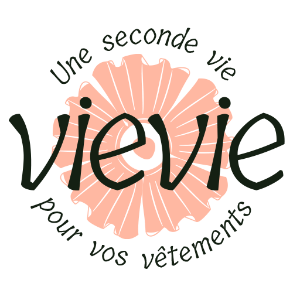FAQ
Where did you get the idea?
I invite you to read The story
How do you do that?
I didn't always make fabric flowers. I studied Design in different fields such as Applied Arts, Ceramic Arts, Product Design and Innovation. Then I worked in digital, always in Design.
-
Cutting the fabric into the garment
I select the areas that will be transformed -
Preparing the fabric
I put a primer on the fabric to stiffen it. This mixture is adapted according to the nature of the fabric, according to its thickness and its nature (silk, cotton, denim, etc.) -
Cutting out the petals and other elements (pistil, stamens, stem, leaves)
After drying, I cut out the different elements -
Modeling the stems and pistil
I create the pistil (heart of the flower) and the stems from wire -
Gluing the stamens
When there are some, I create the stamens (which look like hairs) with wire and glue them one by one. -
Forming and gluing the petals
I shape each petal with an iron and glue them around the pistil/stamen -
Finalizing the leaves and stem
After drying, I make the leaves and mount them on the stem, which I wrap in fabric.
How long does it take you?
I spend about one to eight hours per flower stem depending on its complexity.
What fabrics do you accept?
At the moment I only accept cotton, silk or fine polyester fabrics. This can be shirts, ties, scarves or t-shirts.
Fluffy fabrics (velvet or equivalent) or too thin (voile) must be laminated. For these types of fabrics, I will apply a surcharge since it will take me more time.
The best thing is that you send me several textiles of several types or call me so that we can choose together.
I'm sorting, do you want some fabrics?
It is very kind of you to offer me your donations but my initial concept is to transform your clothes so that you keep a memory of the owner or the history of this garment.
I am sure that your fabrics or textiles that you offer me will make happy an association that has a stock to keep them.
FAQ
Where did you get the idea?
I didn't always make fabric flowers. I studied Design in different fields such as Applied Arts, Ceramic Arts, Product Design and Innovation. Then I worked in digital, always in Design.
It was following the death of my father and the birth of my daughter that I entered a phase of introspection and turned to up-cycling. I then discovered Somebana, the creation of fabric flowers and I became passionate about it.
I invite you to read My complete story.
How do you do that?
To make the flowers, I go through these steps:
- Cutting the fabric into the garment
I select the areas that will be transformed -
Preparing the fabric
I put a primer on the fabric to stiffen it. This mixture is adapted according to the nature of the fabric, according to its thickness and its nature (silk, cotton, denim, etc.) - Cutting out petals and other elements (pistil, stamens, stem, leaves)
After drying, I cut out the different elements - Modeling the stems and pistil
I create the pistil (heart of the flower) and the stems from wire - Gluing the stamens
When there are some, I create the stamens (which look like hairs) with wire and glue them one by one. - Forming and gluing the petals
I shape each petal with an iron and glue them around the pistil/stamen - Finalizing the leaves and stem
After drying, I make the leaves and mount them on the stem, which I wrap in fabric.
These are techniques that have become ancestral and that I learned as an autodidact. I will let you discover a little of the history of this profession that has become rare.
How long does it take you?
I spend about one to eight hours per flower stem depending on its complexity.
How much does it cost?
Considering the time spent and my rare skills, each rod starts at €20 for the simplest.
It is a work of patience, each flower is unique, handmade and carries its story. We cannot compare them with artificial flowers made in a factory in an underdeveloped country.
What fabrics do you accept?
At the moment I only accept cotton, silk or fine polyester fabrics. This can be shirts, ties, scarves or t-shirts.
Fluffy fabrics (velvet or equivalent) or too thin (voile) must be laminated. For these types of fabrics, I will apply a surcharge since it will take me more time.
The best thing is that you send me several textiles of several types or that you contact me so that we can choose together.
How to care for flowers?
Using a brush, dust from time to time.
Flowers do not tolerate humidity, they must be stored in a dry place.
Finally, to preserve the color, avoid exposing it in a place that is too sunny. Like any garment, the color could be altered in the long term.
I'm sorting, do you want some fabrics?
It is very kind of you to offer me your donations but my initial concept is to transform your clothes so that you keep a memory of the owner or the history of this garment.
I am sure that your fabrics or textiles that you offer me will make happy an association that has a stock to keep them.
Discover the flowers
You too would like to make a product for yourself or as a gift, browse our products and choose the one you like.
